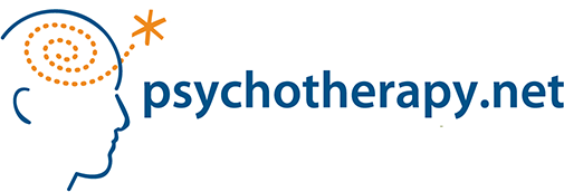Two years ago, I released a song called Imposters, which explored my feeling of not belonging, especially in relationships. Fast forward to today, and I find myself still wrestling with the same theme. However, my perspective has evolved. I am no longer speaking just as a musician, but also as a therapist, a writer, and a human being actively living through this experience.
Over the past year and a half, these questions have become personal; I turned 30, became a business owner, assumed the role of lead psychotherapist in my mental health practice, and launched a podcast called Do We Have Your Attention? (shameless plug—go listen). On paper, it appears that I am thriving. In reality, much of this growth has felt out of my control. It was during this significant transitional phase that imposter syndrome resurfaced more intensely than ever before.
Despite having extensive training from one of the top clinical training programs in the country, a license to practice, and a growing business, I found myself doubting my competence. The number of accomplishments did not seem to matter; when the feeling of unworthiness sets in, it can easily overshadow everything. This brought me to a deeper and more critical question: how do we measure worthiness? To truly understand imposter syndrome, I feel compelled to examine the standards against which we compare ourselves.
Isaac Prilleltensky describes worthiness as the feeling of being valued and the ability to give value to oneself and others. Based on that definition, I should undoubtedly feel worthy. After all, I have dedicated my life to helping others heal and thrive. Yet, despite these tangible contributions, the voice of self-doubt has persisted, highlighting the disconnect between external achievements and internal validation.
Why, after reaching these professional milestones, was the voice of my imposter syndrome louder than ever? Tracing this back led me to my childhood. I was the student who struggled academically, often hovering between average and below average. At one point, my parents even considered having me repeat a grade. Reading and comprehension were significant challenges. I could study an entire chemistry textbook and retain almost nothing. Instead of encouragement, I frequently received criticism, particularly from teachers, reinforcing the belief that I was incapable. Slowly, a damaging internal narrative formed: I am incompetent.
While not everyone’s experience with imposter syndrome originates this way, identifying the root belief system has been an essential road stop on my healing journey. Given my academic struggles, and the subtle, but consistent, feelings of disappointment from important figures in my life, it makes sense that success now feels undeserved. Early narratives, once embedded, have clearly shaped my self-perception long after I have outgrown the environments that created them.
Understanding this, it has become clear that addressing my imposter syndrome is not solely about recounting achievements; it is about confronting the reflection I meet in the mirror each day. It is about understanding why I so often meet my reflection with shame, criticism, and doubt, instead of acceptance and worthiness.
Could healing imposter syndrome be as simple as identifying its roots? The answer, unfortunately, is no. Recognizing where it started has certainly been essential, but it is only part of the work. We must also contend with external reinforcements—failed relationships, rejected opportunities, academic struggles, and the perpetual comparisons fostered by social media, where others’ curated successes are constantly on display. These external triggers have continuously reinforced my feelings of inadequacy.
Recognize, the first step. For me, it often involves recognizing the feeling of incompetence resurfacing, particularly as I step into public roles—building a business, launching a podcast, and exposing myself to real-time visibility and judgment. Vulnerability is inevitable.
Allow, the second step. Allow the experience to exist just as it is. This has been difficult for me, and can be especially so for those who habitually try to control outcomes. The goal here is not to fix or suppress the emotion but simply to sit with it.
Investigate, the third step. This means approaching your experience with curiosity and compassion, rather than judgment. Asking questions such as: What beliefs are fueling this feeling of fraudulence? How is this emotion manifesting in my body? This step invites gentle exploration rather than critical analysis.
Nurture, the fourth and final step. Here, you meet the pain with kindness. Ask yourself: What do I need right now? and then offer that, whether it is reassurance, forgiveness, comfort, or patience. This is the space where healing begins to take root.
RAIN is not a magic fix. It is a practice that demands consistency, patience, and kindness. Each person’s process of nurturing may look different, and that is not only acceptable but necessary for true self-compassion.
Today, I continue to navigate imposter syndrome. I am learning to balance building a new life while tending to the younger parts of myself that need validation and reassurance. My focus now lies in disciplined self-care: wellness routines, prayer, nervous system regulation, and practicing RAIN.
Despite being high achieving by many standards, she struggled with persistent feelings of inadequacy, often comparing her life trajectory to that of her peers. These comparisons left her questioning her worth and accomplishments, particularly because she had not followed certain conventional milestones such as pursuing a postgraduate degree, or attaining what she perceived as a “stable” professional identity.
Complicating her experience was a long-standing history of Attention-Deficit/Hyperactivity Disorder (ADHD) and Generalized Anxiety Disorder (GAD), both of which amplified her self-doubt and made it difficult for her to feel grounded in her successes. As our work progressed, it became increasingly clear that her internal narratives of success were not organically her own––they were shaped by broader societal pressures and cultural messaging about what it means to be accomplished, especially as a Black woman expected to “excel” in all domains.
Together, we began the process of deconstructing these inherited belief systems, and rebuilding a more authentic, internally defined understanding of success and happiness. A key part of this work involved using the RAIN framework (Recognize, Allow, Investigate, Nurture) as a tool for emotional regulation and self-inquiry.
We began by Recognizing the core distress: the belief that she was “unsuccessful.” This belief stemmed from her decision not to pursue further academic credentials and from taking the bold step of starting her own business, choices that felt right to her but conflicted with societal norms.
Next, we practiced Allowing, making space for the emotions that accompanied this belief, rather than trying to immediately fix, change, or suppress them. This allowed her to begin cultivating a compassionate relationship with her inner experience.
As she became more comfortable with allowing these emotions to exist, we moved into Investigation, exploring questions like: What do I believe being “unsuccessful” says about me? Where did this belief come from? How does it show up in my body? This phase helped her connect with the somatic experiences of anxiety and perfectionism, allowing for deeper insight into the ways these beliefs were embedded in both mind and body.
Finally, we moved into Nurture, supporting her in meeting herself with compassion and care. This included grounding practices, affirming internal dialogue, and honoring her needs for safety, validation, and emotional rest.
Over time, she began to recognize that success is not a fixed or universal standard, but rather a deeply personal and evolving concept. Through this reframing, she was able to cultivate her definitions of what it means to live a meaningful, successful life free from the limiting expectations that had previously governed her self-worth.
File under: Musings and Reflections
Like what you are reading? For more stimulating stories, thought-provoking articles and new video announcements, sign up for our monthly newsletter.
The Evolution of an Imposter
What exactly is imposter syndrome? The dictionary defines it as “the persistent feeling of not deserving one’s success and of being a fraud despite a history of accomplishments.” With that definition in mind, it is important to ask: why is this experience so seemingly common? Is it because we live in a world where personal successes are only validated when they align with rigid societal standards? Or is it because we are so emotionally, mentally, and spiritually undernourished that we struggle to affirm ourselves, making it almost impossible to acknowledge our growth, even when it is right in front of us?Over the past year and a half, these questions have become personal; I turned 30, became a business owner, assumed the role of lead psychotherapist in my mental health practice, and launched a podcast called Do We Have Your Attention? (shameless plug—go listen). On paper, it appears that I am thriving. In reality, much of this growth has felt out of my control. It was during this significant transitional phase that imposter syndrome resurfaced more intensely than ever before.
Despite having extensive training from one of the top clinical training programs in the country, a license to practice, and a growing business, I found myself doubting my competence. The number of accomplishments did not seem to matter; when the feeling of unworthiness sets in, it can easily overshadow everything. This brought me to a deeper and more critical question: how do we measure worthiness? To truly understand imposter syndrome, I feel compelled to examine the standards against which we compare ourselves.
Isaac Prilleltensky describes worthiness as the feeling of being valued and the ability to give value to oneself and others. Based on that definition, I should undoubtedly feel worthy. After all, I have dedicated my life to helping others heal and thrive. Yet, despite these tangible contributions, the voice of self-doubt has persisted, highlighting the disconnect between external achievements and internal validation.
Why, after reaching these professional milestones, was the voice of my imposter syndrome louder than ever? Tracing this back led me to my childhood. I was the student who struggled academically, often hovering between average and below average. At one point, my parents even considered having me repeat a grade. Reading and comprehension were significant challenges. I could study an entire chemistry textbook and retain almost nothing. Instead of encouragement, I frequently received criticism, particularly from teachers, reinforcing the belief that I was incapable. Slowly, a damaging internal narrative formed: I am incompetent.
While not everyone’s experience with imposter syndrome originates this way, identifying the root belief system has been an essential road stop on my healing journey. Given my academic struggles, and the subtle, but consistent, feelings of disappointment from important figures in my life, it makes sense that success now feels undeserved. Early narratives, once embedded, have clearly shaped my self-perception long after I have outgrown the environments that created them.
Understanding this, it has become clear that addressing my imposter syndrome is not solely about recounting achievements; it is about confronting the reflection I meet in the mirror each day. It is about understanding why I so often meet my reflection with shame, criticism, and doubt, instead of acceptance and worthiness.
Could healing imposter syndrome be as simple as identifying its roots? The answer, unfortunately, is no. Recognizing where it started has certainly been essential, but it is only part of the work. We must also contend with external reinforcements—failed relationships, rejected opportunities, academic struggles, and the perpetual comparisons fostered by social media, where others’ curated successes are constantly on display. These external triggers have continuously reinforced my feelings of inadequacy.
A Remedy to the Imposter Syndrome
A tool I have found incredibly helpful in managing these feelings is a mindfulness practice called RAIN, developed by Tara Brach. RAIN is an acronym that stands for: Recognize, Allow, Investigate, and Nurture. It is a framework that guides individuals in meeting difficult emotions with both compassion and clarity.Recognize, the first step. For me, it often involves recognizing the feeling of incompetence resurfacing, particularly as I step into public roles—building a business, launching a podcast, and exposing myself to real-time visibility and judgment. Vulnerability is inevitable.
Allow, the second step. Allow the experience to exist just as it is. This has been difficult for me, and can be especially so for those who habitually try to control outcomes. The goal here is not to fix or suppress the emotion but simply to sit with it.
Investigate, the third step. This means approaching your experience with curiosity and compassion, rather than judgment. Asking questions such as: What beliefs are fueling this feeling of fraudulence? How is this emotion manifesting in my body? This step invites gentle exploration rather than critical analysis.
Nurture, the fourth and final step. Here, you meet the pain with kindness. Ask yourself: What do I need right now? and then offer that, whether it is reassurance, forgiveness, comfort, or patience. This is the space where healing begins to take root.
RAIN is not a magic fix. It is a practice that demands consistency, patience, and kindness. Each person’s process of nurturing may look different, and that is not only acceptable but necessary for true self-compassion.
Today, I continue to navigate imposter syndrome. I am learning to balance building a new life while tending to the younger parts of myself that need validation and reassurance. My focus now lies in disciplined self-care: wellness routines, prayer, nervous system regulation, and practicing RAIN.
Case Application
In my clinical practice, I’ve worked with numerous individuals grappling with the weight of imposter syndrome, particularly those from marginalized communities where societal expectations often clash with personal realities. One client, a Black woman in her early thirties, offered a vivid example of how imposter syndrome can intersect with perfectionism, anxiety, and culturally constructed definitions of success.Despite being high achieving by many standards, she struggled with persistent feelings of inadequacy, often comparing her life trajectory to that of her peers. These comparisons left her questioning her worth and accomplishments, particularly because she had not followed certain conventional milestones such as pursuing a postgraduate degree, or attaining what she perceived as a “stable” professional identity.
Complicating her experience was a long-standing history of Attention-Deficit/Hyperactivity Disorder (ADHD) and Generalized Anxiety Disorder (GAD), both of which amplified her self-doubt and made it difficult for her to feel grounded in her successes. As our work progressed, it became increasingly clear that her internal narratives of success were not organically her own––they were shaped by broader societal pressures and cultural messaging about what it means to be accomplished, especially as a Black woman expected to “excel” in all domains.
Together, we began the process of deconstructing these inherited belief systems, and rebuilding a more authentic, internally defined understanding of success and happiness. A key part of this work involved using the RAIN framework (Recognize, Allow, Investigate, Nurture) as a tool for emotional regulation and self-inquiry.
We began by Recognizing the core distress: the belief that she was “unsuccessful.” This belief stemmed from her decision not to pursue further academic credentials and from taking the bold step of starting her own business, choices that felt right to her but conflicted with societal norms.
Next, we practiced Allowing, making space for the emotions that accompanied this belief, rather than trying to immediately fix, change, or suppress them. This allowed her to begin cultivating a compassionate relationship with her inner experience.
As she became more comfortable with allowing these emotions to exist, we moved into Investigation, exploring questions like: What do I believe being “unsuccessful” says about me? Where did this belief come from? How does it show up in my body? This phase helped her connect with the somatic experiences of anxiety and perfectionism, allowing for deeper insight into the ways these beliefs were embedded in both mind and body.
Finally, we moved into Nurture, supporting her in meeting herself with compassion and care. This included grounding practices, affirming internal dialogue, and honoring her needs for safety, validation, and emotional rest.
Over time, she began to recognize that success is not a fixed or universal standard, but rather a deeply personal and evolving concept. Through this reframing, she was able to cultivate her definitions of what it means to live a meaningful, successful life free from the limiting expectations that had previously governed her self-worth.
File under: Musings and Reflections






